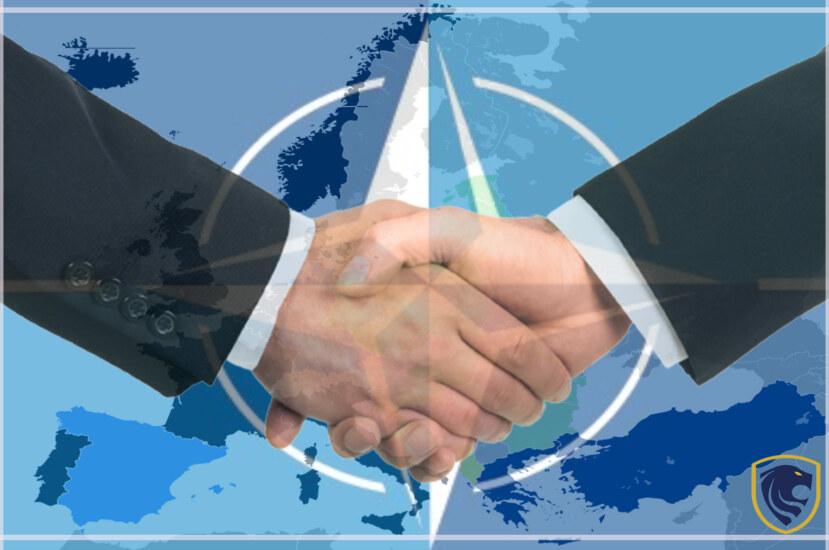NATO is the North Atlantic Treaty Organization, or simply the NATO for short. This intergovernmental defense alliance provides collective defense for its 30 member states. It was founded in 1949 and was signed by 12 countries but has grown to include many more since then. NATO produces some of the best military equipment and weapons in the world. That includes tanks, artillery pieces, helicopters, fighter jets, bombers, missiles, and more.
NATO’s main purpose is to “maintain international peace,” which essentially means they want to provide security in times of peace as well as provide support during the war.
NATO’s members are the United States, Canada, Europe (except Russia), the U.K. and other Western European countries, Turkey, Italy, and Spain. Some countries like Israel, Japan, and others have relations with NATO that do not include military action.
Why was NATO formed?
NATO was formed in response to Germany’s annexation of neighboring Austria in 1938. And also Italy’s invasion of Ethiopia in 1935 before that. It formed a formal body named the North Atlantic Council in 1949. That governs NATO and is made up of all member states except for Russia, which has a separate military agreement with NATO. That allows some of their forces to operate within the borders of other countries.

NATO countries
The North Atlantic Treaty was signed on April 4, 1949, in Washington D.C. and divided Europe into two military alliances. The North Atlantic Treaty Organization (NATO) and the Warsaw Pact (created in 1955). NATO provides collective defense for its members, who are responsible for their troops. The United States is legally responsible for its own countries’ troops. But other countries either pay or provide a contribution to help defray the costs of maintaining the soldiers who guard them.
The North Atlantic Treaty Organization, a.k.a. NATO, was created to protect Western Europe from the Soviet Union, which is part of Eastern Europe. In its first significant act, NATO established a unified command for all elements of the West’s military forces. That was including continental and marine troops (a separate command that would handle the air forces). It also organized integrated air defenses, a precursor to future NATO air and ground operations against an enemy that could muster nuclear weapons as well as conventional forces.
When was it founded?
NATO was founded on April 4, 1949, at the signing of the North Atlantic Treaty. That had been drawn up by Britain and France several months earlier (the U.S. was an enthusiastic supporter but did not actively participate in the drafting). It is the descendant of the 1948 Brussels Treaty Organization (BTO), which itself grew out of a series of defense agreements dating to the late 1940s. When NATO was officially established, it took over much of its predecessor organizations’ infrastructure, including location and personnel.
What is even more important about NATO are its peacekeeping missions, including Bosnia, Kosovo, and Macedonia.
NATO peacekeeping missions are unique in that they are run under a specific Article under the North Atlantic Treaty for them to be legal. Article 5 states that an attack on one or more of them is considered as an attack on all members. And they must therefore support each other. Article 5 has only been used once, and that was for the 9/11 terrorist attacks on the United States but was not invoked because no member state was directly attacked.

Berlin Wall
There have been no instances of Article 5 being invoked; however, there have been many situations where it has come close to being used. In particular, during the Cold War, NATO and Soviet troops were often stationed only a few miles apart in Europe. And would therefore be able to escalate a conflict very quickly if they engaged each other. NATO forces have only been involved in one direct combat situation in the organization’s history when bombs were dropped on Kosovo.
Defining moment
The defining moment for NATO came on November 9, 1989, when the Berlin Wall was torn down. This event showed that Communist oppression could not stand up to pressure from the people. And the Soviet Union would eventually collapse under its own weight. It caused changes across Eastern Europe and led to a reunification of Germany, which had been divided since World War II. The fall of Communism also meant that some Eastern European countries could start looking at joining NATO themselves.
As it was impossible to predict how long the Union of Soviet Socialist Republics (USSR) would survive. There were two main scenarios that NATO planners considered. The first was a long war lasting at least four years. The main objectives would be to cripple and undermine the military capability of the USSR while also keeping Western European countries stable and secure. The second scenario was a short war lasting only a few days or weeks. In this case, NATO forces would have to launch a coordinated defense against any possible Warsaw Pact invasion. This contingency included dealing with more covert warfare tactics such as sabotage, terrorism, and assassinations.
Peacekeeping efforts
NATO members have been involved in many peacekeeping efforts worldwide, including Bosnia, Kosovo, and Macedonia. They have also been involved in disaster relief and humanitarian aid. Currently, NATO is very active along its borders so that it can monitor any problems before they become serious threats.
NATO’s peacekeeping forces are called “stabilization forces” designed to help bring an end to a conflict or peace enforcement measures that require military intervention. While the United Nations is responsible for international peace and security, NATO maintains a vital role in delivering the military side of that equation. Because it only acts when there is clear evidence of aggression. NATO’s armed forces stand as the first line of defense against military threats. Their job is to alert leaders about potential trouble spots on our planet before they erupt into full-scale violence.
NATO forces

NATO forces can also act as a deterrent against potential aggressors. The mere presence of the alliance’s military and large numbers of troops from its member countries can be enough to discourage a possible foe. And, because these forces are ready and able to deploy rapidly. They can often frustrate an attack before it has even begun. If deterrence fails and fighting breaks out, NATO forces serve as the first line of defense against a military invasion or attack. They are particularly important in helping smaller countries that don’t have the resources to defend themselves without assistance from overseas.
American troops were first committed to NATO in support of its mission during the Korean War when U.S. forces were deployed in West Germany. Then, in 1954, the U.S. Air Force joined with 12 other NATO countries to form the NATO Airborne Early Warning Force (NAEWF). This was followed by participation in peacekeeping missions as far away as Thailand and the Congo during the 1960s. And 1970s (where American troops faithfully served under the command flag of Canada). A number of U.S. troops also served in NATO during Operation Desert Shield/Desert Storm during Operations Desert Shield and Operation Staunch in Kuwait from 1990-1991.
“Triangular” structure
The current structure of a U.S. Army unit committed to NATO missions is based on a “triangular” structure. That consists of a headquarters element, commanded by a U.S. colonel or general officer and usually composed of planning and coordination staffs, an operations section, and deployable combat units. They will typically be from the U.S. Army’s Regimental Combat Team (RCT), National Guard Division (National Guard), or U.S. Army Test and Evaluation Command Brigades (Eval), as well as various service components such as Military Police units and combat engineers provided by the U.S. Army Intelligence and Security Command’s Special Troops Battalion (STB).
The current standard U.S. Army infantry company is a mixture of all these elements from various U.S. units. This is called a “triangular” unit because they are made up of members from all three branches of the U.S. military. That participate in the same operation. Each branch contributes different capabilities beyond those deployed to each operation. Such as the helicopter lift team that comes from the National Guard Aviation unit. And their ability to operate with a full complement of aircraft and ground support equipment before, during, and after an engagement




